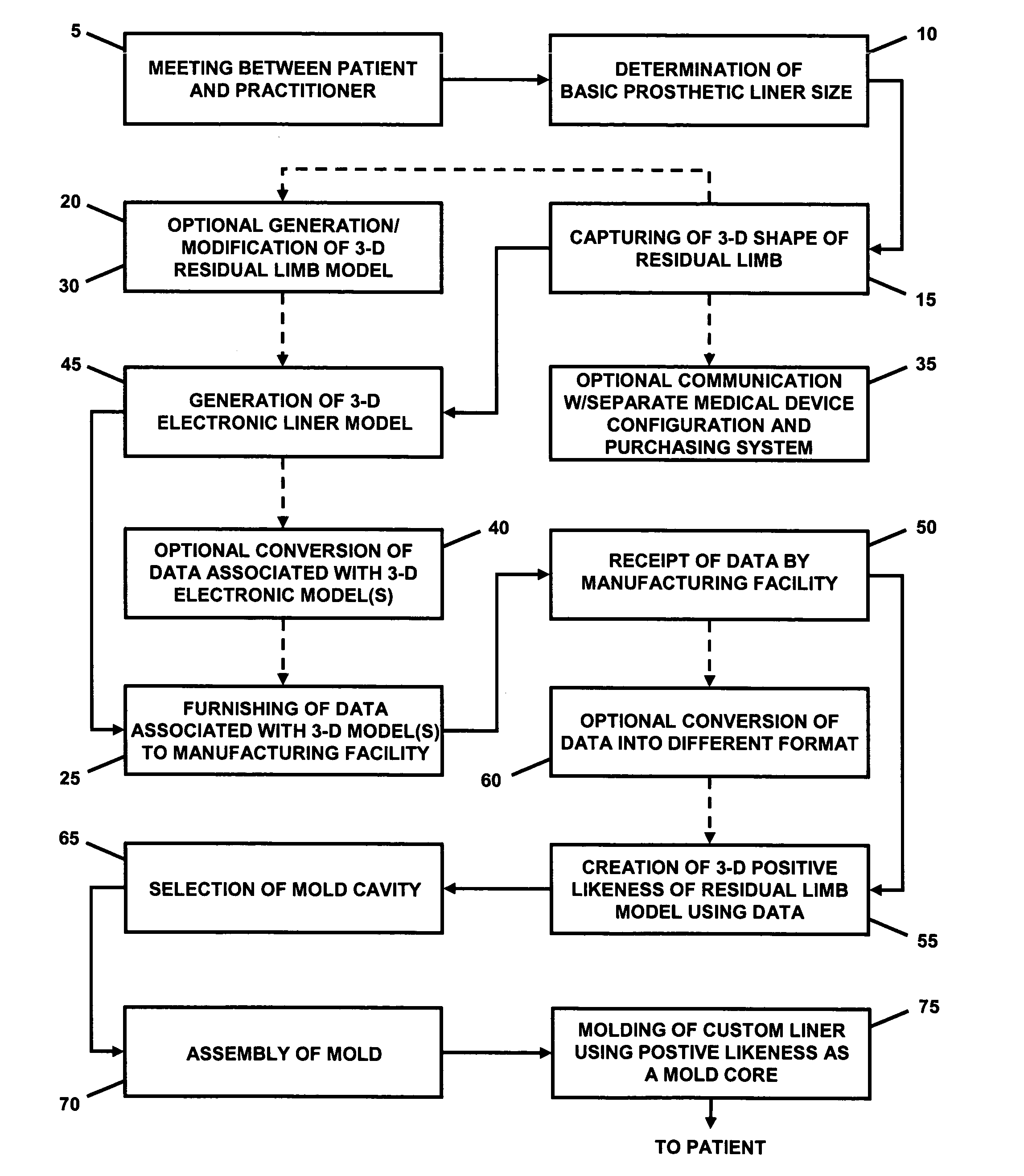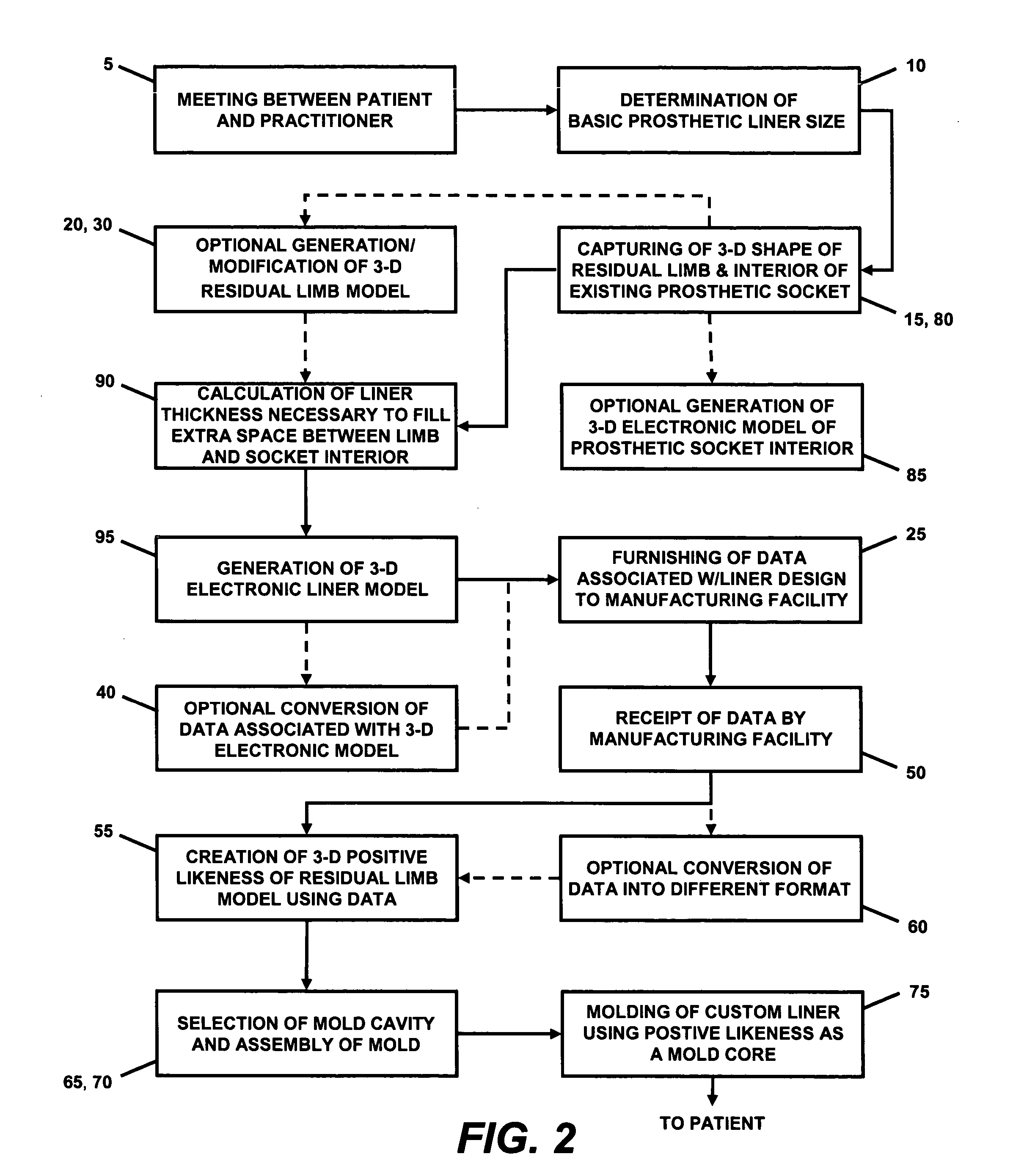Custom prosthetic liner manufacturing system and method
- Summary
- Abstract
- Description
- Claims
- Application Information
AI Technical Summary
Benefits of technology
Problems solved by technology
Method used
Image
Examples
Embodiment Construction
)
[0026] The system and method of the present invention allows for the efficient and cost effective manufacturing of a custom prosthetic liner. The system and method of the present invention will generally include: a means for scanning, photographing, digitizing, measuring, or otherwise capturing the 3-dimensional shape of an amputee's residual limb; an optional means for converting the captured shape of the residual limb into a viewable 3-dimensional model; a means for producing a viewable 3-dimensional liner model; a means for manipulating the 3-dimensional residual limb and / or liner model in order to further enhance and customize the fit and performance of the liner that will be manufactured therefrom; a means for providing the finalized data associated with the 3-dimensional liner model to a facility that will manufacture a liner from the data; a means for producing a 3-dimensional likeness (positive) of the (modified or unmodified) residual limb from the data; and a means of usi...
PUM
 Login to View More
Login to View More Abstract
Description
Claims
Application Information
 Login to View More
Login to View More - R&D
- Intellectual Property
- Life Sciences
- Materials
- Tech Scout
- Unparalleled Data Quality
- Higher Quality Content
- 60% Fewer Hallucinations
Browse by: Latest US Patents, China's latest patents, Technical Efficacy Thesaurus, Application Domain, Technology Topic, Popular Technical Reports.
© 2025 PatSnap. All rights reserved.Legal|Privacy policy|Modern Slavery Act Transparency Statement|Sitemap|About US| Contact US: help@patsnap.com



